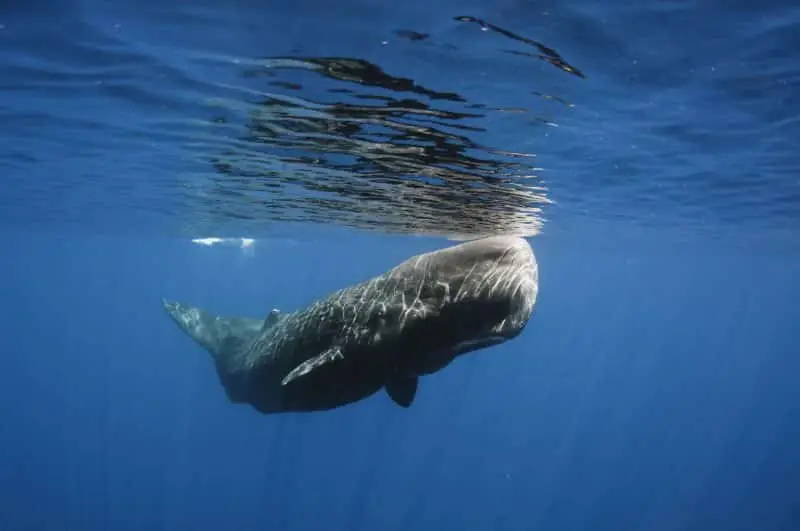Get ready to explore the awe-inspiring world of the largest sperm whale in the world. These mighty creatures have long captured the imagination of scientists and nature enthusiasts alike with their legendary diving abilities and colossal size. Sperm whales can grow up to a massive 67 feet long and weigh over 50 tons, making them one of the largest creatures on the planet. Moreover, they are known to have the deepest diving abilities of any mammal, easily plunging to depths of over 3,000 feet.
So, are you ready for a journey into the enigmatic world of the largest sperm whale? Let’s not wait; delve deeper into these fascinating creatures and discover incredible facts about their lifestyle, behavior, and biology.
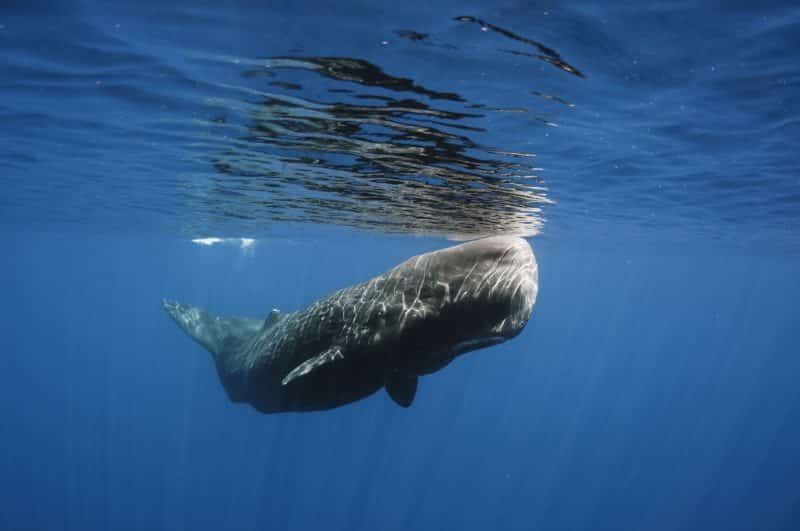
Key Points
| The sperm whale grows up to a massive 67 feet in length and weighs over 50 tons. |
| Scientists have been using satellite tags and hydrophones to track and study their movements, trying to understand why they dive to such incredible depths and how they find their food in the ocean’s pitch-black depths. |
| Acoustic sensors and satellite tracking systems have enabled scientists to monitor the movements and behavior of these animals in greater detail than ever before. |
| Their colossal size, enigmatic nature, and otherworldly underwater environment have provided artists with rich material for their work. |
| In the future, we can expect to learn even more about these awe-inspiring animals as researchers continue to explore the enigmatic world of the largest sperm whale. |
Want to jump ahead? Click below
Size And Physical Attributes
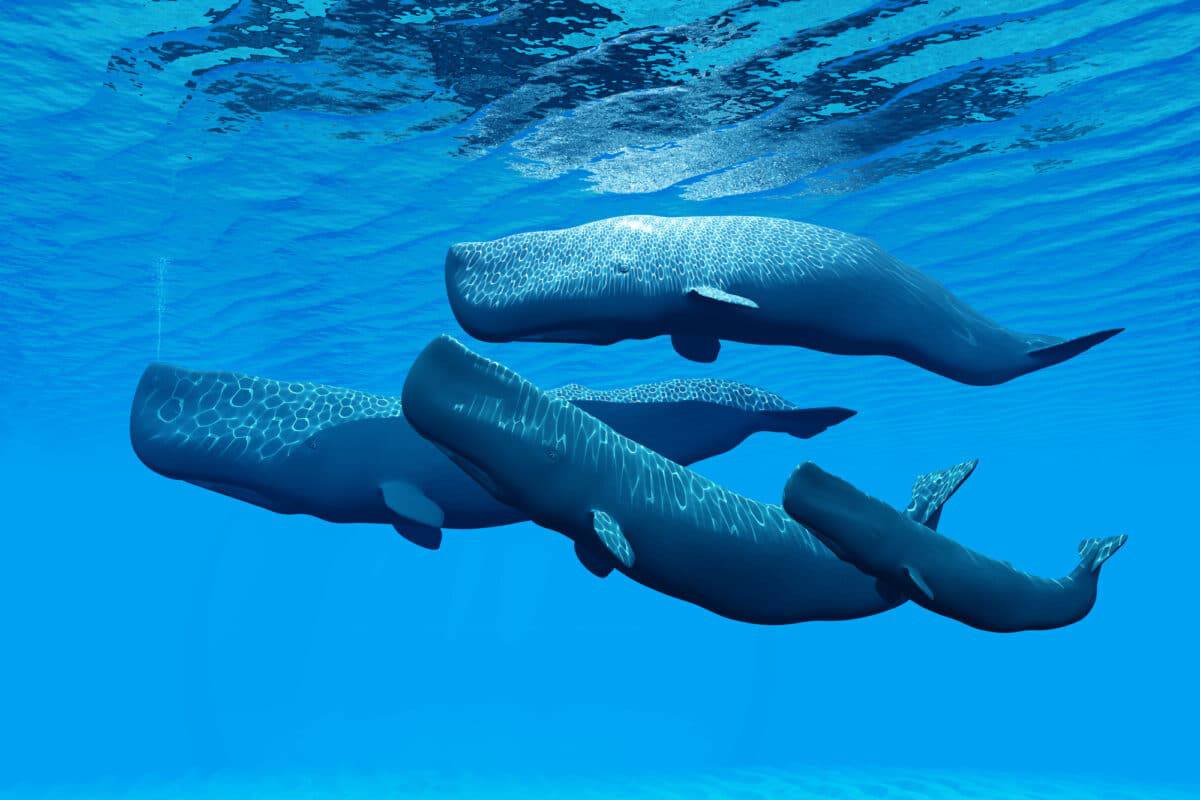
The sperm whale is an incredible species, boasting some of any mammal’s most awe-inspiring physical attributes. Growing up to a massive 67 feet in length and weighing over 50 tons, these giants of the sea are simply breathtaking.
One of the most striking features of the sperm whale is its enormous head, which can account for up to one-third of the animal’s entire body length. This head is filled with a substance called spermaceti, which is believed to help the whale regulate its buoyancy while diving and hunting. In addition to their huge heads, sperm whales have several other distinctive physical features, including a wide, rectangular-shaped fluke, a small dorsal fin, and a series of ventral pleats that help to increase the animal’s surface area while feeding.
When compared to other popularly known mammals, such as elephants and blue whales, sperm whales are certainly among the largest and most impressive creatures in the animal kingdom. While elephants can weigh up to 12 tons and grow up to 13 feet in height, and blue whales can reach lengths of up to 100 feet and weigh as much as 200 tons, the sperm whale still stands out for its unique combination of size, strength, and grace.
Diving Abilities: Unraveling The Secrets Of The Largest Sperm Whale
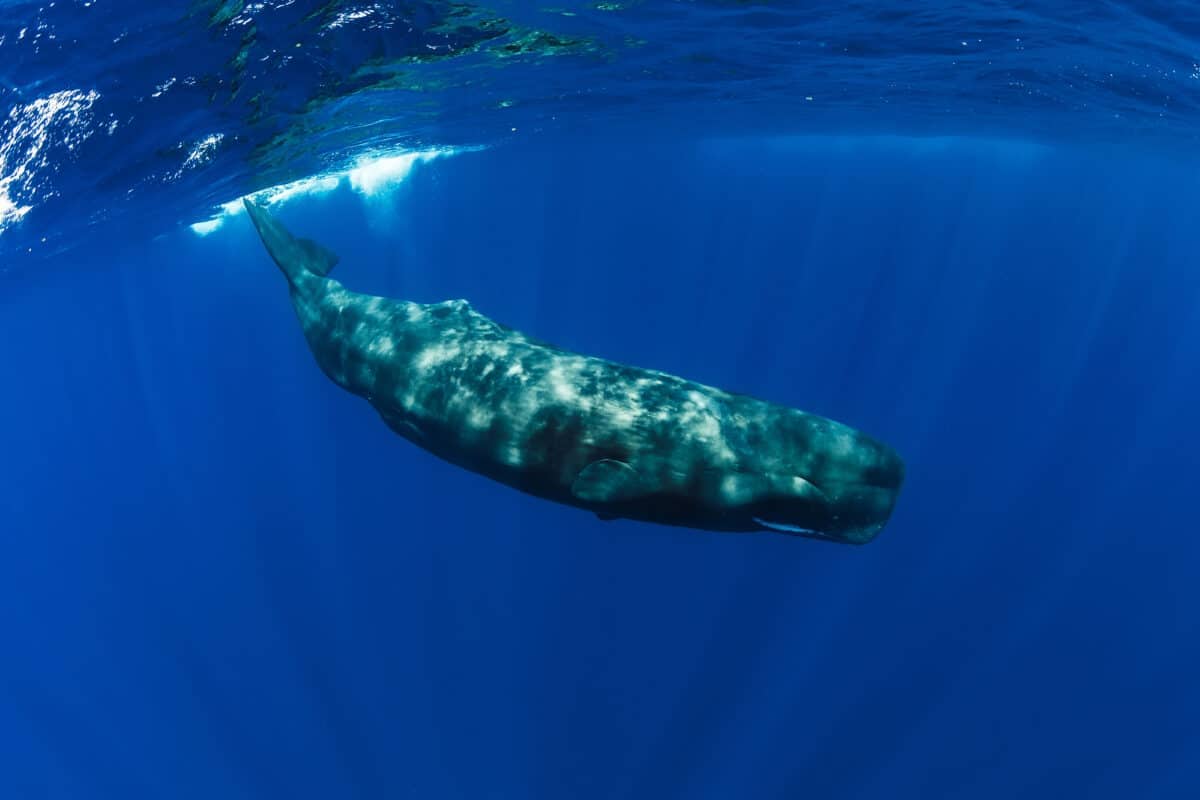
Sperm whales are undoubtedly one of the most intriguing creatures of the deep sea, known for their impressive size, unique physical features, and remarkable diving abilities. As we delve deeper into their world, let us explore more about their legendary prowess in diving to the deepest depths and unravel the secrets of these incredible creatures.
The Deepest Divers In The Animal Kingdom
Sperm whales are renowned for their remarkable diving abilities, which allow them to descend to incredible depths of over 3,000 feet. They can hold their breath for more than an hour during a single dive, and their bodies are specially adapted to cope with the immense pressures of the deep ocean.
Unlike other whales, sperm whales have a unique structure called the spermaceti organ, filled with a waxy oil that helps them regulate their buoyancy. This oil also acts as a sound lens, enabling them to focus their echolocation clicks on locating their prey in complete darkness.
Understanding Their Feeding And Diving Patterns
Despite decades of research, there is still much to learn about the feeding and diving patterns of sperm whales. Scientists have been using satellite tags and hydrophones to track and study their movements, trying to understand why they dive to such incredible depths and how they find their food in the ocean’s pitch-black depths.
One hypothesis suggests sperm whales dive to the depths to hunt for their favorite prey, the giant squid. These elusive creatures reside in the abyssal zone, a region of the ocean floor that reaches 6,000 meters deep. By diving deep, sperm whales can enter the perfect hunting ground for this squid. Another theory suggests that sperm whales use deep diving to thermoregulate. As they dive deeper, they encounter colder water, which helps them regulate their body temperature and avoid overheating.
Despite the numerous hypotheses about sperm whale diving patterns, there is still much to learn. However, with technological advances and ongoing research efforts, scientists hope to unravel the mysteries of these incredible creatures’ hunting and diving habits.
Social Life Of Sperm Whales
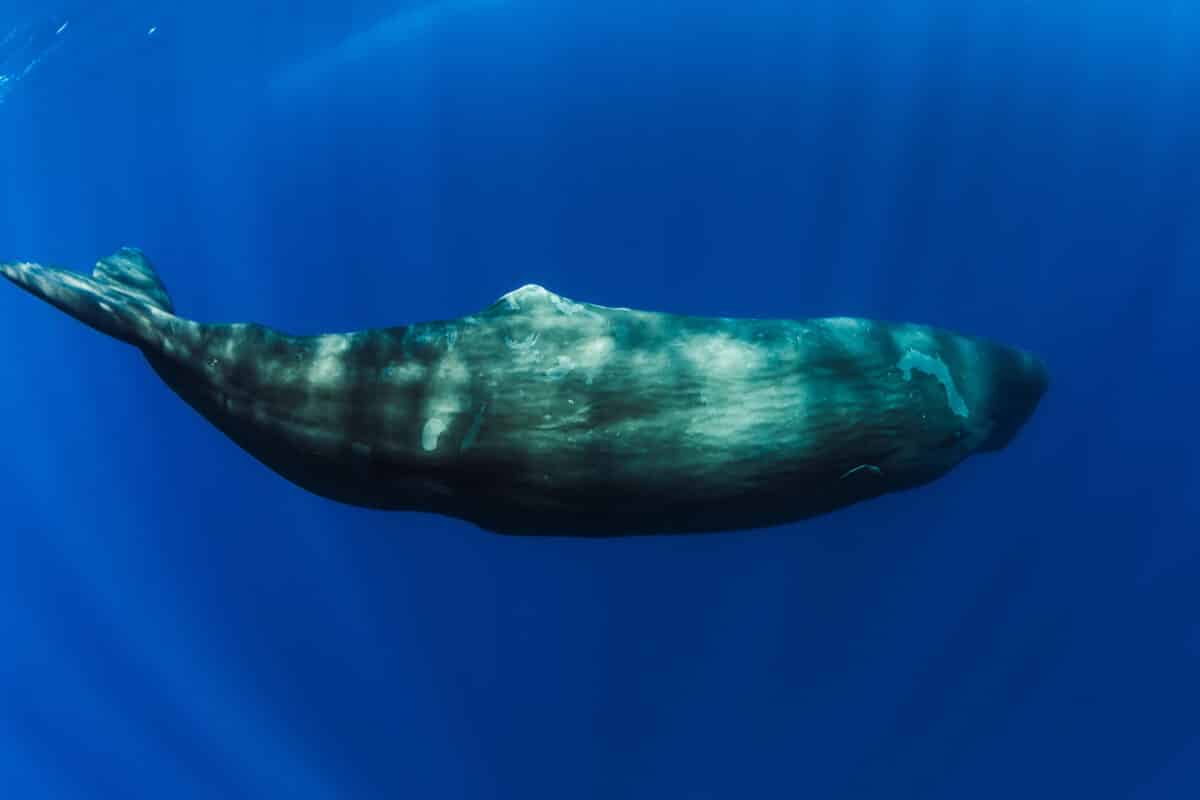
Sperm whales are highly social creatures and live in family groups called pods. These pods can range in size from just a few individuals to as many as 20 or more. The membership of these pods is not fixed, and individual whales may freely associate with other pods, forming temporary aggregations. However, the most stable and cohesive pods comprise related females and their offspring, while adult males typically live solitary lives or in smaller male groups.
Within a pod, sperm whales have a complex social structure and communicate with each other using a variety of vocalizations, including clicks, whistles, and pulsed calls. The whales’ specialized nasal passages, the spermaceti organ, produce these sounds. Sperm whales are thought to be capable of communicating over hundreds of miles using these vocalizations, which may be used for a variety of functions, including navigation, hunting, and socializing.
Besides, sperm whales are not known to display overtly social behaviors, such as grooming or physical contact. Instead, they spend much time diving, hunting, and traveling, with only occasional social interactions. Nonetheless, researchers have observed cooperative behavior, such as groups of sperm whales working together to protect calves from predators or to hunt squid.
Check this out: Sperm whale facts.
Mystic Factor: Sperm Whales And The Human Imagination
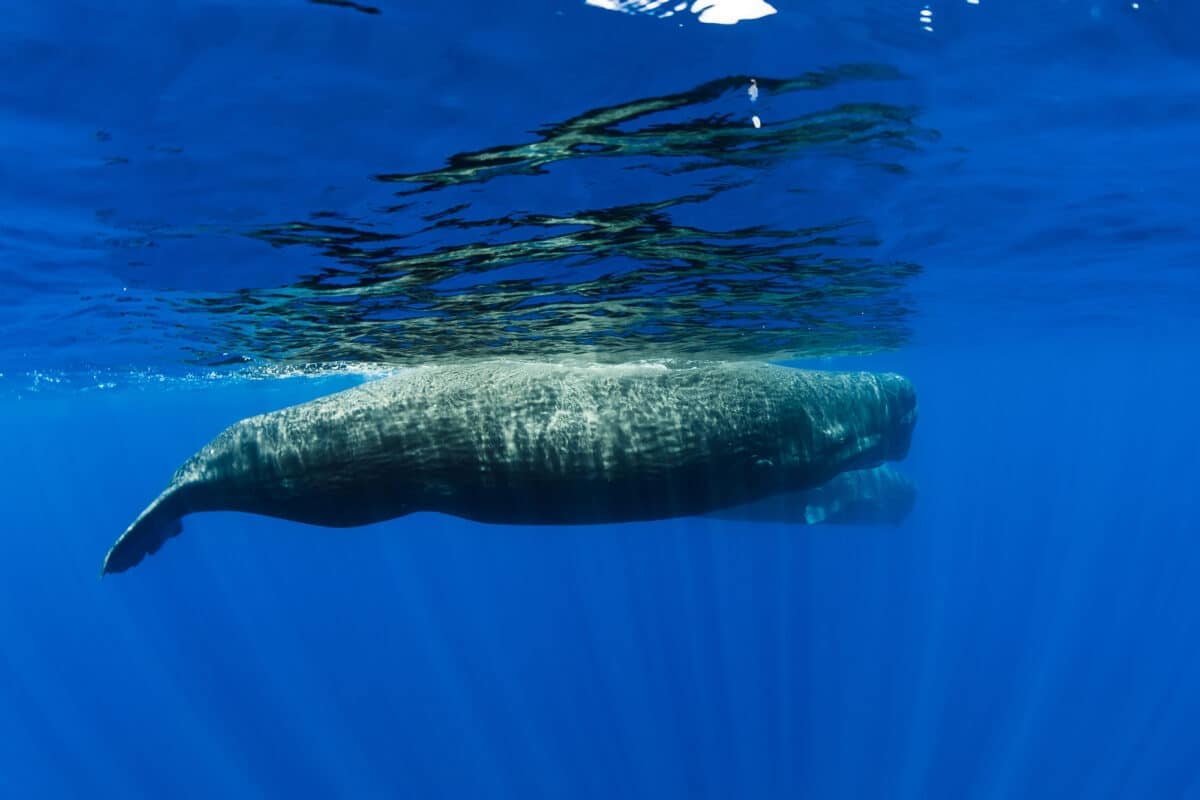
Sperm whales have long captured the human imagination, prominently in literature, art, and film. Herman Melville’s “Moby Dick,” one of the greatest American novels ever written, is a classic example of literature featuring the sperm whale. The book tells the story of Captain Ahab’s obsession with hunting and killing a legendary white sperm whale. Its themes of obsession, revenge, and the struggle between man and nature still resonate today.
In art, sperm whales have been depicted in various styles, from realistic representations to abstract interpretations. Their colossal size, enigmatic nature, and otherworldly underwater environment have provided artists with rich material for their work. Famous examples include Winslow Homer’s “The Gulf Stream,” which features a stranded sailor being circled by a group of sperm whales, and Wyland’s iconic series of murals celebrating ocean life, which feature dozens of whale species, including sperm whales.
Finally, sperm whales have been featured in several documentaries, including National Geographic’s “Kingdom of the Blue Whale” and BBC’s “Blue Planet.” These documentaries showcase the incredible biology and behavior of sperm whales, providing viewers with a glimpse into the enigmatic world of these majestic creatures.
Future Perspectives
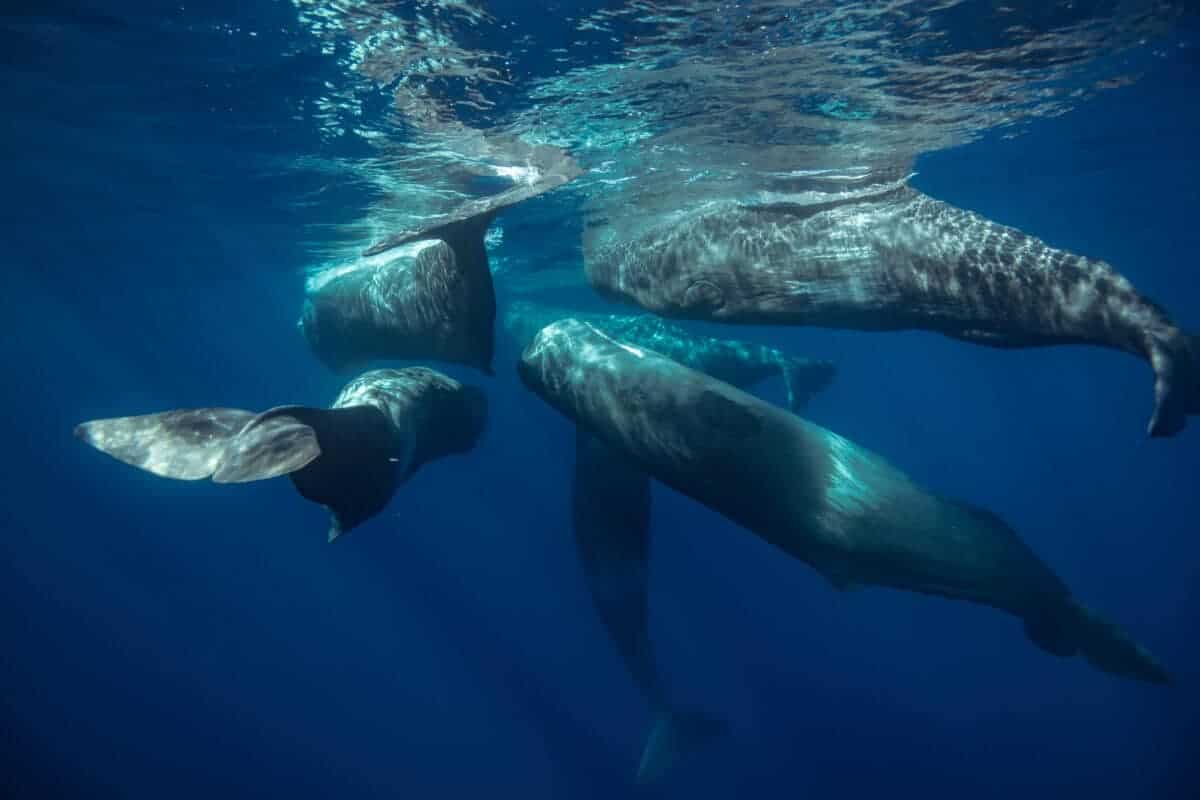
Despite their immense size and widespread distribution, much of the biology and behavior of sperm whales remain poorly understood. Ongoing research focused on improving our understanding of these animals, particularly emphasizing their vocalizations, social behavior, and ecological interactions. In addition, efforts are underway to assess the impacts of human activities. Things such as commercial whaling and ocean noise pollution on these vulnerable species.
Technological advances have recently provided researchers with new tools for studying sperm whales. Acoustic sensors and satellite tracking systems have enabled scientists to monitor the movements. As well as the behavior of these animals in greater detail than ever before. In addition, genetic analyses have provided insights into the population structure and evolutionary history of sperm whales. Thus, shedding new light on their biology and the challenges they face.
In future, we can expect to learn even more about these awe-inspiring animals. Researchers continue to explore the enigmatic world of the largest sperm whale. Through these efforts, we hope to gain a deeper appreciation of these magnificent creatures. Additionally, develop the tools and knowledge needed to conserve them for future generations.
FAQs
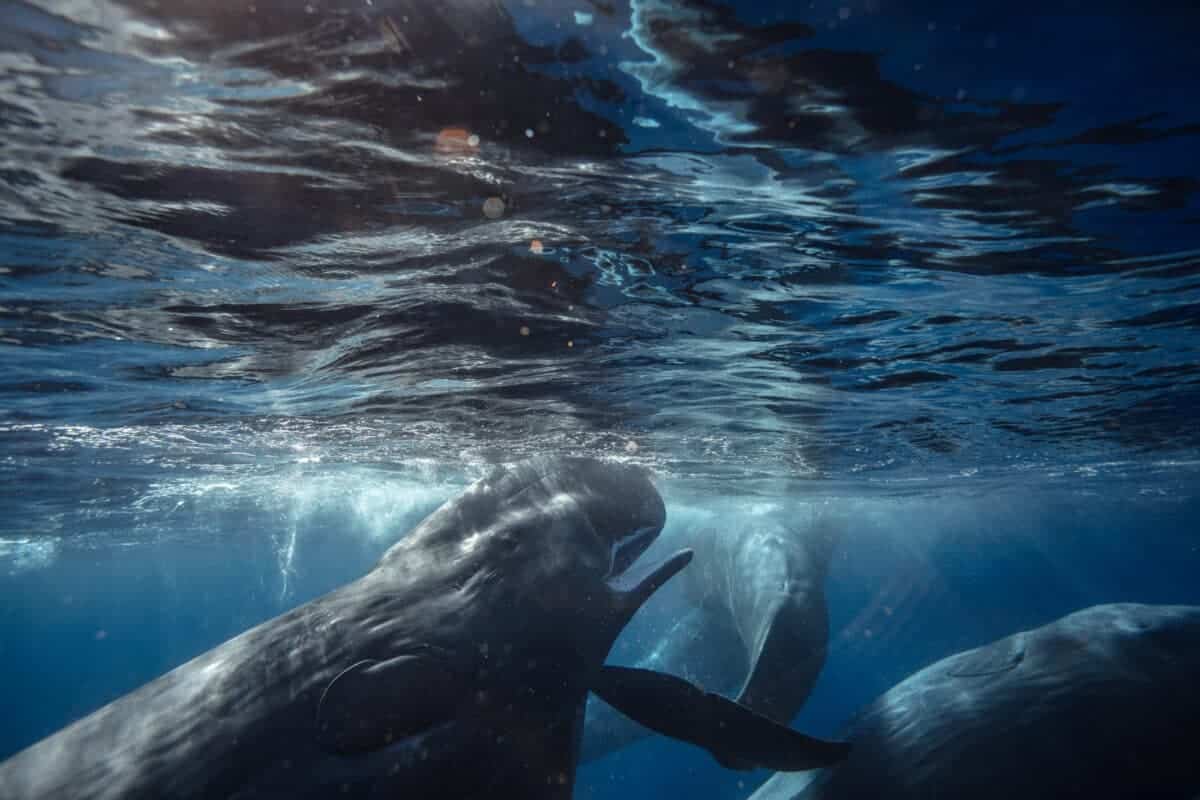
- What Is The World’s Largest Sperm Whale?
The world’s largest sperm whale is the Physeter macrocephalus, the giant sperm whale. Males can grow up to 67 feet (20.5 meters) in length and weigh in at over 55 tons.
- How Long Can A Sperm Whale Dive?
Sperm whales are known to be one of the deepest diving mammals, diving as deep as 7,200 feet (2,200 meters). They can do this for up to an hour and a half. This is thanks to their unique ability to store oxygen in their blood and muscles.
- What Is The Diet Of The Largest Sperm Whale?
The diet of the largest sperm whale primarily consists of giant squid. They also feed on various fish, octopuses, and crustaceans. They have a unique hunting strategy that involves diving deep into the ocean to catch their prey using echolocation.
Wrapping Up with the Largest Sperm Whale
Sperm Whale is a creature of mythic proportions with a unique and fascinating place in the natural world. Its massive size and intelligent communication skills have captivated scientists and animal lovers for generations. Despite the challenges posed by human activity, this majestic creature continues to thrive in the world’s oceans and provide vital ecological services to the planet.
As we learn more about the Sperm Whale, we better understand the richness and diversity of the world’s ecosystems. By learning about this awe-inspiring creature, we can gain a greater appreciation for the complexity and beauty of the natural world.
Next up:
- Discover The Largest Saber-Toothed Tiger
- Discover the Largest Whale Shark
- Explore The Largest Subspecies Of Tiger
- Selkirk Rex Cat - April 25, 2024
- Bald Eagle Family Expand Their Nest In California - April 24, 2024
- Firefighter Saves Abandoned Kittens Found Cuddling In Hoses - April 24, 2024

